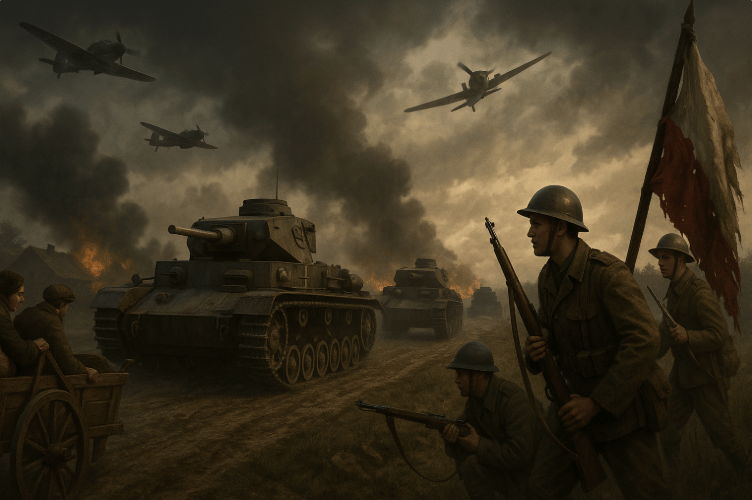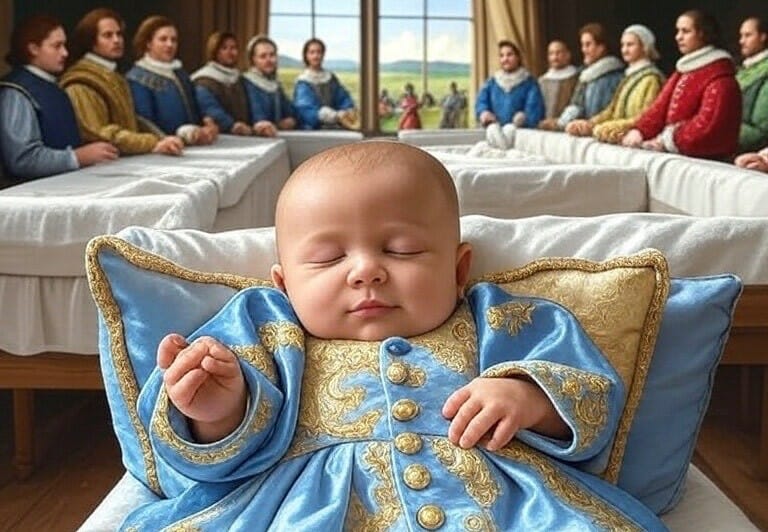- LOL History
- Posts
- 🎨 This Week In History - The Great Fire of 1666 Started
🎨 This Week In History - The Great Fire of 1666 Started
The week of August 31 - September 7 throughout history.

Welcome back History Nerds,
What another crazy week in history this first week of September was. From the start of World War II, to the end of the American Revolution, we’ve got a really interesting read for you this morning. So, grab yourself a cup of coffee and enjoy this week’s edition of the LOL History Newsletter!
Did You Know? On April 4, 1949, Iceland almost didn’t join NATO until the U.S. reminded them they didn’t actually have a military. With no army, navy, or air force, Iceland agreed to sign on, making it the only NATO country that brings zero troops and one very solid vibe to the alliance. Turns out, sometimes being friendly, cold, and strategically located is all you need.
During Your History Lesson You’ll Learn About:
Peace at Last: The 1783 Treaty That Ended a Revolution
World War II Begins With A Blitz
A Kingdom in the Hands of a Baby: England in 1422
The Great Fire of 1666

The Treaty of Paris (1783): The End of the American Revolution

On September 3, 1783, the Treaty of Paris was signed in the elegant salons of Paris, officially ending the American Revolutionary War. After eight years of bloody conflict, representatives from Great Britain and the newly formed United States gathered to ink the agreement that acknowledged American independence. The treaty granted generous boundaries to the U.S., stretching from the Atlantic Ocean to the Mississippi River.
The signing was both solemn and celebratory, marking the birth of a new nation on the world stage. Benjamin Franklin, always the diplomat with a flair for charm, was one of the American negotiators, ensuring favorable terms. Across the Atlantic, King George III had to accept that the colonies were lost for good. For Americans, it was a moment of triumph; for Britain, a time to regroup and reflect.

World War II Begins With A Blitz

On September 1, 1939, Adolf Hitler made good on his threats and sent German troops storming into Poland. It wasn’t your average border dispute. This was blitzkrieg, or “lightning war,” and it lived up to the name. Tanks, planes, and soldiers moved with terrifying speed, overwhelming Polish defenses before most people even finished their breakfast. It was the kind of military strategy that rewrote the rules of modern warfare—fast, ruthless, and completely devastating.
Poland put up a brave fight, but the odds were stacked high. France and Britain had promised to help if Hitler attacked, and while they technically declared war, their help didn’t come fast enough to stop the disaster. Then came the gut punch: on September 17, the Soviet Union invaded Poland from the east, splitting the country in two and sealing its fate. In less than a month, Poland was occupied by two of the most brutal regimes in history.
This invasion didn’t just redraw borders, it ignited World War II. It proved that appeasement had failed, that Hitler wasn’t bluffing, and that the world was headed for the deadliest conflict in human history. What happened in Poland was the opening move in a global tragedy that would cost tens of millions of lives. Looking back, it’s a chilling reminder of how quickly history can turn—and how dangerous it is to underestimate a dictator.

Do You Think World War III Will Happen in Our Lifetime? |

The Boy Who Became King: Henry VI’s Unlikely Inheritance

On August 31, 1422, baby Henry VI became King of England at just eight months old, following the untimely death of his father, the legendary warrior king Henry V. Cradled in royal silks rather than crowned in glory, Henry was too young to hold a sword, let alone a scepter. Nobles ruled on his behalf, turning the royal court into something like a glorified daycare mixed with a political chessboard.
While knights clashed in France during the Hundred Years' War, back home little Henry’s nursery was likely the most peaceful room in the palace. The young king grew up surrounded by tutors, toys, and prayers for his future wisdom. Sadly, his reign took a darker turn in adulthood. With a gentle temperament and bouts of mental illness, Henry's rule eventually gave way to chaos, leading to the infamous Wars of the Roses.

London in Flames: The Great Fire of 1666

On September 2, 1666, London woke up to the smell of smoke and the glow of disaster. The fire started in the most British way possible: in a bakery on Pudding Lane. One minute the king’s baker was closing up shop, and the next, flames were dancing across rooftops like it was Guy Fawkes Night. Fueled by dry timber and a city packed tighter than a tea tin, the fire didn’t just spread—it devoured.
For four straight days, the flames tore through London, turning medieval homes, businesses, and Old St. Paul’s Cathedral into ash. With no organized fire department and plenty of wind to stoke the blaze, chaos reigned. People tried to stop it by demolishing buildings in its path—sometimes too late, sometimes by accident. By the time the fire finally burned itself out, over 13,000 houses were gone and much of the old city was a smoking pile of rubble.
And yet, from the ashes came a new London. The fire, though devastating, helped clear out the plague-ridden, rat-infested streets of the medieval city. It also led to modern building codes and a reimagined skyline. So yes, it was one of the worst disasters in London’s history—but it also gave the city a chance to rise from the flames, cleaner, safer, and a little less flammable.

Grow Your Business by Advertising With Us!
Reach thousands of engaged history nerds who love fun, fascinating, and well-told stories from the past. If you want to get your brand in front of curious, history-loving readers, let’s chat!

See You Next Time!
We hope that you enjoyed this edition of the LOL History newsletter! See you next week!
— Evan & Derek - LOL History Co-Founders